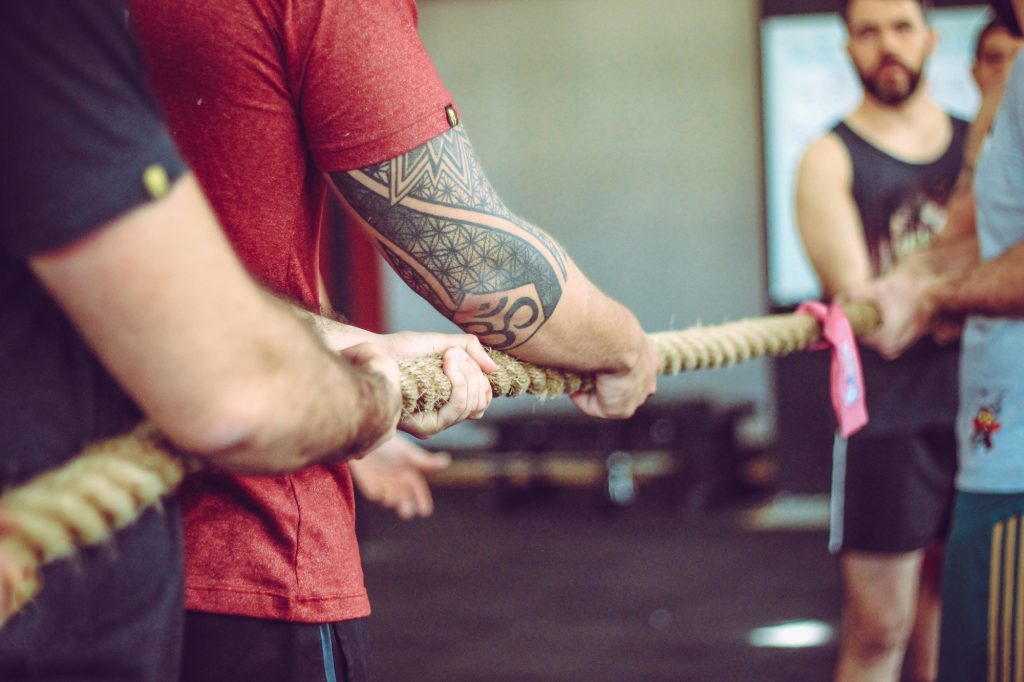Your nonprofit is unique. Even if you have a similar mission to another organization, you stand out. The way you run your business, communicate with your donors, and champion your cause are unique to you. Why settle for cookie cutter events that every nonprofit does? Sure, a 5K race or gala event can be a moneymaker, but do they offer any surprises that delight your donors? If you want your events to be an experience your donors won’t soon forget, your event must be unique. These unique peer-to-peer event concepts can be modified to match your nonprofit’s personality.
Wow guests with a unique performance

Your nonprofit is unique. Even if you have a similar mission to another organization, you stand out. The way you run your business, communicate with your donors, and champion your cause are unique to you. Why settle for cookie cutter events that every nonprofit does? Sure, a 5K race or gala event can be a moneymaker, but do they offer any surprises that delight your donors? If you want your events to be an experience your donors won’t soon forget, your event must be unique. These unique peer-to-peer event concepts can be modified to match your nonprofit’s personality.
Make unconventional art

Our next unique idea pits fundraising teams against one another to create pieces of art. However, they won’t be using conventional art supplies. Instead, participants are challenged to create art using everyday household items. What they choose to do with the objects they receive is up to them, but they can’t use outside supplies.
At the start of this unconventional art show, teams choose their supplies by picking a box at random. Inside the box are all the tools they can use to create their masterpiece. The boxes can be filled with any odd assortments of household goods, food, or junk. One thing’s for certain though, none of the boxes will contain paints, brushes, canvas, or other traditional artists’ tools.
The purpose is to get participants to think outside the box when making art. If a team sees materials in another group’s box that they want to use, that team can pay to steal those supplies from that team. Strategically timing these donations to steal supplies can hinder the progress of other teams while providing opportunities to enhance your art.
Offer to rent teams conventional art supplies like paints and brushes for a set donation amount. But, limit the time the team gets to use those supplies with a digital timer. When time is up, collect their art supplies. If they want to extend their time, teams must make another donation.
Set a time limit for each team to create their work of art. Next, display their art work on stage and have a representative from each team present their piece and collect donations from guests. The donations act as votes for that team’s art piece. One dollar equals one vote. The team that raises the most money for their artwork at the end of the event is declared the winner. To make this event more profitable, add an auction sub-event after the winning team is declared and auction off each team’s artwork. If your nonprofit supports the arts, consider auctioning donation pieces from local artists, too.
Paintball competition

Athletic event fundraisers are common with nonprofits, but even this type of event can be made more unique. Rather than a humdrum competition, pit teams against one another in an unconventional activity. A paintball tournament is an excellent example of this. You can run the competition as a giant capture the flag game where teams defend their flag while trying to steal the other team’s or pit teams against each other in head-to-head combat.
One important thing to consider is that this sport can cause physical injury. Make sure the paintball range offers safety training to each team before the event. Enforce safety rules during the event and be sure to send wardrobe requirements to participants before the tournament begins. You don’t want teams participating without the right safety gear on!
To make money with this type of event, award teams with extra paintball rounds for reaching fundraising milestones. Having a more significant stockpile of paintballs gives teams a great advantage.
This type of event is a great chance to sell cool event-related merchandise to participants and those who come to watch. Set up a peer-to-peer store and have volunteers sell merchandise at the event. Design a great event t-shirt and offer it up for sale. Other items to consider selling are event branded patches and refreshments.
Tug of war with a twist

Our last event idea is a unique take on tug of war. You’ve likely been introduced to tug of war in PE or at a summer camp. Typically, the strongest team wins by making the opposing team cross a line. For this event, teams compete against one another like a traditional game of tug of war. However, donations are used to give teams advantages over one another.
To start, each team selects three participants to go head to head against participants from another team. Then, the rest of the team and their supporters must fundraise a certain amount so they can leave the sidelines and pick up the slack for their team.
The number of players released depends on the fundraising milestone reached before the round begins. Give teams around ten minutes before the start of each round to collect donations from their supporters. Encourage giving via text fundraising and give each team their own unique keyword.
Then, at the end of their fundraising time, determine how much each team raised and how many team members are released as a result. Then, start the tug of war.
Run the event like a double elimination tournament. Each team has two lives. Teams compete until all but one has been eliminated. That team will be declared the tug of war champion. To keep things interesting, major fundraising milestones ($1,000+), earn the team a handicap they can use against the team of their choice. Handicaps can be simple, like returning opposing team members to the sidelines or making the other team compete one-handed. For higher fundraising milestones, make things more interesting with more advanced handicaps like making the opposing team compete while standing on top of a slip and slide.
Conclusion
There’s nothing wrong with traditional fundraising events! But if your supporters are getting bored of your annual events, shake things up with unique peer-to-peer events. Get creative with your concept and find ways to encourage teams and their supporters to give during your event. This can be as simple as selling merchandise during your event, or incentivizing donations by giving teams an advantage for raising more money. The only limits are your budget and your imagination.



